How to swing a well: methods for pumping after drilling and during operation
When a well appears on the site that provides a steady flow of water, this is a joyful event, because the complex and expensive work was completed successfully. Do you agree?
But the quality of the water received may cause some confusion among the ignorant owners of the site. It is more like a stream of very liquid mud than drinking water. Do not be alarmed, it should be so.
Drilling a well is only half the battle. To provide the house with enough suitable water for use, you need to learn how to swing the well, and then perform a series of simple, but rather labor-intensive operations. We will tell you how to cope with this seemingly difficult task.
Below, we will describe the reasons why wells need pumping and how to eliminate them. You will also find information on how to independently pump, which is required for this. The article is accompanied by visual photos and video materials that will help to understand this issue in more detail.
The content of the article:
Why does the well need pumping?
The dirty water coming from the well at first is a natural and natural phenomenon. Small particles of soil and other insoluble inclusions are mixed with water, forming a suspension that is not suitable for people, or even for household needs. The only way to get rid of it is to pump out pollution along with water.
Understanding the causes of siltation will not only allow you to put the well in order initially, but also help organize it proper operation. Typically, such a strong contamination of water in a well is observed only immediately after completion of drilling.
However, owners of a new well should remember that similar problems may arise later.
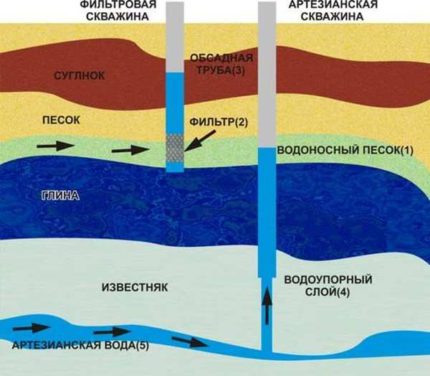
Small clay particles, together with larger inclusions, accumulate at the bottom of the trunk, which leads to siltation of the well. Most often this happens if the well is used irregularly.
For example, if a summer house (and a well) was not used during the whole winter period, the owners may find serious siltation. The skills gained during pumping a well will be useful for solving this problem.
Dependent on the composition of the soil in the well, sand deposits of impressive thickness can naturally accumulate. They also create significant problems that are solved by pumping large volumes of water out of the well or by cleaning it.
Well pumping stages
Information on the need for pumping a well is useful even at the stage of its design. If drilling is entrusted to a professional team and not to amateur drillers, then the contract usually includes pumping services.
Stage # 1. Preparation for work
Professionals usually have special pumping equipment capable of pumping out about 3-6 cubic meters of dirty water per hour. Of course, this increases the cost of work, but you should not immediately abandon this addition.
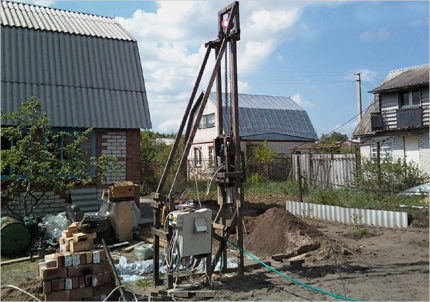
Although the process of self-pumping a well is relatively simple, it will require not only time and effort, but also certain material costs. In addition, you will need minimal skills to work with pumping equipment.
No one can accurately predict how long it takes to pump a well. It is believed that this procedure takes from 12 hours to two days. In practice, the process of self-pumping can take several weeks, or even months, depending on the situation.
A number of factors can affect the time of work:
- well depth;
- nature of soil and pollution;
- professional level of performers;
- features of the pump, etc.
Usually for pumping a not too deep well, in which the aquifer is located in a sand or limestone layer, one working day is enough. But the extraction of sand or clay deposits dissolved in water from a deep “artesian” well can last weeks or months.
If the work dragged on in time, experts do not recommend immediately putting an end to an expensive construction. Most often, a well can be successfully pumped. Although it also happens that even professionals cannot cope with pumping the well, and are forced to recognize the structure as unsuitable for operation. Fortunately, such cases are very rare.
The biggest problems with pumping are expected by owners who have to remove clay deposits dissolved in water from the well. There are known cases when it was decided to scoop up clay and practically all the water from the mine. The result of this time-consuming process was a clean and easy-to-use well.
Each well is a structure with individual characteristics. Even if it was possible to pump a well in a neighboring section in a matter of hours, this does not guarantee the same success for a new construction. Typically, with limestone wells there are more problems with pumping than with sand wells.
For various reasons, the duration of pumping may be maximum or minimum. Delays can also result in damage to the pump, which will have to be completely replaced. Such a situation is not uncommon even during pumping a shallow well.
Stage # 2. Choosing equipment and preparing a place for draining
Before starting work, several important issues should be resolved. First you need to stock up with the necessary equipment, and then provide a place for the discharge of pumped dirty water. The main tool for pumping a well is a pump.
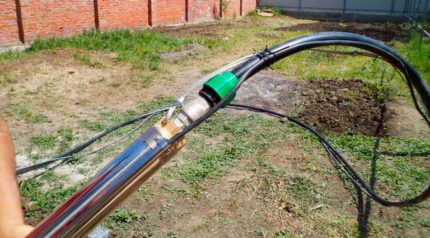
You should not use the pump that was selected to supply clean water to the house. Far from all pump equipment copes with pumping large volumes of water containing a lot of sand, dirt and other suspended particles.
For a home, it is better to buy expensive equipment that will provide uninterrupted water supply for a long time. For pumping, inexpensive models are more suitable, the breakdown of which will not hit the family budget.

Most often, independent work on the well buildup is performed using a domestic inexpensive model of the type "Kid" or “Fontanel”. Well established more powerful "Aquarius".
According to reviews, submersible pumps cope well with pumping wells "Water cannon"although a sand plug may form in the device at the beginning.
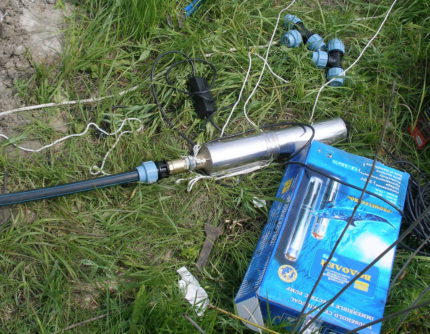
Not too good in combination with sand are models in which water passes through a metal impeller in the form of a “snail”. This element clogs up very quickly, it often has to be cleaned or replaced. Sometimes such pumps break down almost immediately. It all depends on the model, the depth of immersion and the nature of the pollution.
Experts strongly do not recommend using vibratory pumps for the well, preferring centrifugal models. It is believed that vibration can adversely affect the condition of the well, disrupt pipe string connections, swing the casing, etc.
At the same time, many owners describe the positive experience of pumping or cleaning a well using inexpensive vibration technology.
If drilling was carried out by specialists, you should get from them not only a passport for the well, but also recommendations on the equipment for pumping it. Not only the type of pump, but also its performance can be of importance.
If the owner of the well has chosen the budget option: the already mentioned “Malysh” or “Trickle” pumps, he should take into account one point. During the cleaning process, especially in areas with complex, clay contamination, such a pump can quickly fail, because it is still designed to work with clean water.
Two or three “killed” budget pumps for pumping a well after drilling are considered almost the norm. Some owners thus “buried” even five inexpensive units.
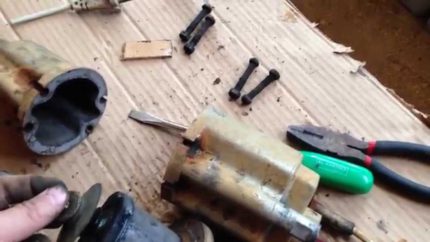
In the process of preparing a submersible pump, you should also make sure that its cable has the required length comparable to the depth of the well. If necessary, increase the cable length, while observing all the requirements of electrical safety standards.
Another important point is the cord on which the pump will be suspended during work (you cannot use an electric cable to lift the device from the shaft!). Budget pumps are equipped with no less than budget cords.
The unit will often have to be removed from the shaft for flushing, the fragile cord can simply break. As a result, problems with flushing will add to the chores of getting a fallen pump.

In some cases, this led to the loss of the entire well. To prevent such a sad situation, you just need to invest in a reliable and durable cord or cable of sufficient length.In the process, it will not hurt to periodically inspect it in order to identify scuffs.
Immediately you need to decide where the pumped water will be discharged (and its total volume can be several tons or more). There is a rule: dirty water needs to be poured out at some distance from the well, otherwise the pumped-out water will simply return to the well shaft, it will have to be pumped out again and again, the process can go on indefinitely.
In addition, the reverse flow of water into the mine can adversely affect the strength of its walls, since water flowing under pressure can disrupt the connection. After that, the liquid that has penetrated through the cracks in the joint can erode the soil surrounding the well.
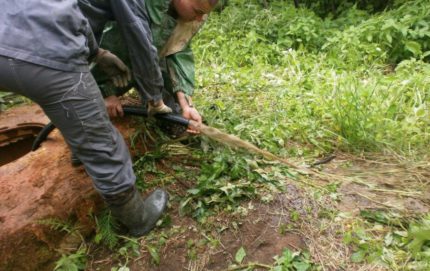
Part of the pumped-out water can be used at the site, for example, for irrigation. Of course, for this it is necessary to first purify the water from pollution. You can make a simple sand trap.
To do this, take a barrel of suitable volume and make two holes in it: the first - in the upper part of the container, the second - approximately in the middle of the barrel.
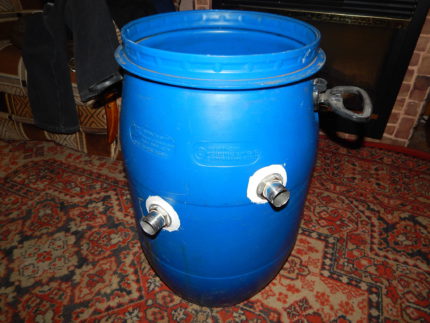
Polluted water is supplied to the sand trap from above, it settles for some time and goes into the second hole located in the middle part. Contaminants, sand, silt and other particles remain at the bottom of the tank. Periodically, the sand trap should be freed from this sediment.
Stage # 3. Well pumping
When cleaning a well after drilling, the following simple operations are performed:
- The pump is lowered into the well so that it is at a certain distance (30-40 or 50-70 cm) from its bottom.
- The pump is turned on and water is pumped out.
- After some time, the equipment is removed and washed, immersed in a container with clean water.
- The washed pump is again lowered into the well and the pumping of dirty water continues.
- The procedure is repeated again and again until a steady stream of clean water appears.
Of course, if the pump fails, it must be replaced with a new device. It should be remembered that as the flushing rises, the bottom of the well may drop slightly. The pump is lowered in this way: immersed until it reaches the bottom, then 30-40 cm of cord are selected and fixed. Sometimes the recommended immersion depth is 50-70 cm.
If the pump is set too high or too low, the results will be unsatisfactory. In the first case, the cleaning will be of poor quality, since the main contamination simply will not get into the pump.
If the pump is suspended too close to the bottom of the well, the flow of contaminants may become too intense. As a result, the pump will quickly become clogged and may soon fail.
There is one more scenario. If the immersion is too low, the pump can simply be drawn into sludge or sand. It is not always possible to free the pump stuck in this way, the sludge sucks even powerful equipment very strongly.
Sometimes this leads to a complete loss of the well. Again, it makes sense to recall the need to purchase a durable cable to suspend pumping equipment.

To pump dirty water efficiently, do not leave the pump in a static state during operation. Experts recommend smoothly moving it in a vertical plane by about 4-6 cm.
In this case, do not make sudden movements so as not to damage the equipment. This technique allows you to lift contaminants from the cork in parts, which largely prevents clogging of the hose.
To ensure that the immersion depth of the pump is correct, do not rely on the length of the cord noted when you first dipped the pump. After each flushing, the pump must be lowered again to the bottom and then raised to the desired height. If water stops flowing, immediately disconnect the equipment from the power supply.
Perhaps the pump still sucked into the sludge, or it simply burned out or clogged. In any case, the device must be removed from the shaft and inspected. If after washing the unit works as before, you can continue pumping.
If the pump is broken, work will have to be stopped in order to purchase new equipment. Downtime can be prevented if you buy another pump in advance. If during the pumping process it is not needed, it can be sold or used for other household needs.
What to do if pumping is delayed?
Some wells have to be pumped for almost months. If the work is going on, and the result is not noticeable, it makes sense to recall the main mistakes that novice masters often make when performing work of this type.
Here are the most common ones:
- The pump is suspended too high, therefore, cleaning of the bottom layers of water is not performed.
- The pump is too low., it is often clogged and may soon break or be sucked into silty sediments.
- Dirty water pours back into the well shaft, which leads to re-contamination of the well.
A simple check of each of these points will help to identify and fix the problem before the situation becomes truly complicated. If the work dragged on, it makes sense to invest in the services of specialists or just consult with more experienced craftsmen.
Causes of siltation and how to eliminate it
When silting or sanding well cleaning can be carried out by various methods. As a prophylaxis, it is sufficient to turn on the pump for several hours and pump out water with accumulated sludge after some downtime or if a slight siltation is detected. The problems are indicated by a slight decrease in well debit.
Finding out how to properly pump a new well, one can find various recommendations, some of which are applicable to the cleaning of already completed and commissioned structures.For example, there is a method of cleaning a well with a fire truck.
At the same time, a large amount of water under pressure is supplied inside the well, which allows breaking up the accumulated contaminants, partially washing them out and facilitating further cleaning of the water source.
The idea is interesting, but it refers to structures that are already in operation and for some reason need to be re-cleaned. It is difficult to pump a well immediately after drilling in this way.
The same can be said about work with the bailer. This is a manual cleaning method in which special bouncer (heavy metal product) is thrown to the bottom of the well so that it breaks and scoops up the dirt and sand accumulated at the bottom. The choke is removed, freed from the sediment and again thrown to the bottom of the well.
Pumped wells and using a motor pump: Caiman, Hitachi, Honda etc. The cost of such an aggregate can be about a thousand dollars, or even two or three thousand, depending on the model.
This method, as well as those described above, will be useful in the future, if necessary reanimate a finished well and clean it from dirt, sand or silt. But at the end of drilling, pumping equipment should be used.
Conclusions and useful video on the topic
Information on well drilling and its buildup is presented in the following material:
The study of videos on cleaning household wells will also be useful:
Successful flushing of the well may take a lot of time and patience. But with a competent approach, this problem can be solved quite successfully.
Have experience in dealing with siltation of a well? Please share information with our readers, suggest your own way to solve the problem. You can leave comments in the form below.

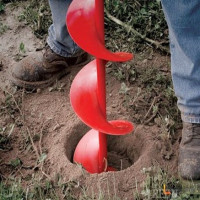 How to drill a well with your own hands: ways to budget independent drilling
How to drill a well with your own hands: ways to budget independent drilling  Do-it-yourself flushing of the well after drilling: step-by-step briefing on the work
Do-it-yourself flushing of the well after drilling: step-by-step briefing on the work 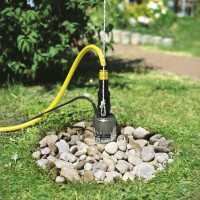 Installation of the pump in the well: how to properly install the pumping equipment
Installation of the pump in the well: how to properly install the pumping equipment 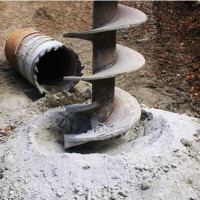 Methods of drilling wells: technological principles and features of the main methods
Methods of drilling wells: technological principles and features of the main methods 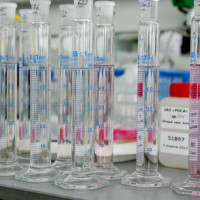 How to properly analyze the water from the well and disinfect it after checking
How to properly analyze the water from the well and disinfect it after checking 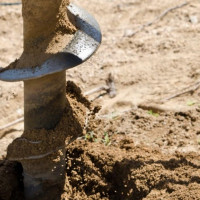 How to punch a well into water: options and drilling technologies that are in demand in practice
How to punch a well into water: options and drilling technologies that are in demand in practice  How much does it cost to connect gas to a private house: the price of organizing gas supply
How much does it cost to connect gas to a private house: the price of organizing gas supply  The best washing machines with dryer: model rating and customer tips
The best washing machines with dryer: model rating and customer tips  What is the color temperature of light and the nuances of choosing the temperature of the lamps to suit your needs
What is the color temperature of light and the nuances of choosing the temperature of the lamps to suit your needs  Replacement of a geyser in an apartment: replacement paperwork + basic norms and requirements
Replacement of a geyser in an apartment: replacement paperwork + basic norms and requirements
Naturally, just one private well can be expected right away. The water will be terribly dirty and straight of any color: from brown or gray-green due to the inclusion of clay particles, to red from ferruginous sandy rocks. First, you should pump out a few tens of liters of water, if the water still did not become transparent, then you need to come up with something else. For example, install a series of filters. In a well with a water intake in the sand, a filter should be used, a strainer should also be installed in front of the surface pump and at the water inlet to the building.If you plan to use water for drinking purposes, regardless of the degree of turbidity, it is necessary to take the sample for inspection to the SES.
I have a similar well in my summer cottage, and there are also problems with drinking water, or rather, with its quality. A neighbor suggested that this well be shaken. After searching for information on the Internet, I decided to do it myself. In fact, there is nothing complicated, especially if you have even worked a little with pumping equipment. Yes, the costs will be anyway, but it will still be cheaper than hiring workers.
Good afternoon! Can you give some advice? A 32 m well was drilled. An aquifer of 3 meters, however, a very small debit of water. Around the pipe there is water, it does not go deep into the water. Drillers claim that the water will leave, it will arrive in the well, it’s necessary to pump it for two days ... But how to do this if the water is pumped out in 15 - 20 minutes. The water is almost pure, without impurities and odor. We turn off the pump, wait 30 minutes and after switching on again it lasts for about 20 minutes. Submersible pump “Aquarius”. Drillers came, tried to break through the filters by washing. The result is zero. There was still little water left. What can be done in such a situation? maybe you need to re-drill the well?
Natalia, what does “last for 20 minutes” mean? How much water does Aquarius pump out in twenty minutes? I pump out water from a well in 4 minutes and I’m not upset, because for these 4 minutes, about 150 liters are pumped out - for everyday life it is a lot, but for efficient pumping - just right. You probably have good casing filters that create an “obstruction” of dirty water. I envy you. If you want the well to shake longer - use a pump with a lower capacity or a hand pump that was used in the recent past ... but why?
Hello, tell me please, I was drilled a well of 23 meters, at first there were 4 buckets, then 6, now 14, and this is no longer added, a month has already passed. I pump out 4-5 times a day. Tell me what to do?
Hello, in your case, contact a specialist to find the reasons and identify a solution to the problem. Only on the spot can this be determined by making the necessary measurements, evaluating the condition of the borehole bottom, the quality of available water, engineering equipment and geo-features. It is possible that the problem is easily solved.
Hello. We drilled a well 20 meters, returned 15, the drillers said that water is better here. I pumped for a month, the pressure is excellent, the water is clear almost from the very beginning, but with a smell and how it becomes brown. How can I fix the situation? The neighbor has a depth of 5 meters, the water is good. Can I raise mine too? Is it possible?
Hello! I see that the problem is not yours alone with muddy water from the well, so I will share with you experience in this direction.
There can be a lot of reasons, therefore, based on the general information that I received from your question, I will list possible options for the causes of the problem, as well as ways to solve them:
1. Damaged strainer. Replacing this item with a disk cleaner.
2. High content of iron elements. The problem is solved by a special filter that performs the process of iron removal from the well.
3. Incorrect assembly and installation of pipes. If this problem occurs, then specialists must fix it themselves! This may include depressurization of the column, leaching of gravel dumping.
4. Bacteria, algae and microorganisms. Carry out a laboratory analysis of water, if the problem is confirmed, then flush the well and chlorinate.
First of all, conduct a normal pumping of the well, this may be enough.
Good afternoon.I drilled a well, pumped it for several days - the water is clean, but each time the pump is turned on, the water is cloudy, for about 3-5 minutes, then again clean. Why is this happening and what needs to be done? Well 2 months.
You need to clean the well from silt and sand deposits at the bottom. To do this, you will need a submersible vibration pump with a bottom water intake. On the bottom you need to attach a special bracket. Next, fasten the pump to the cable and lower it to the very bottom, make rotational movements, lowering the equipment up and down.
Thus, you raise all the sediment together with water to the surface. After such cleaning, you should always have clean water from the well. Periodically, you will have to repeat this procedure to eliminate sludge.
We drilled a well of 15 m, water of 10 m. I’ve been pumping 3.5 m3 per hour for the 7th day - the water is not decreasing, but it is cloudy.